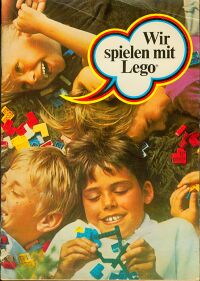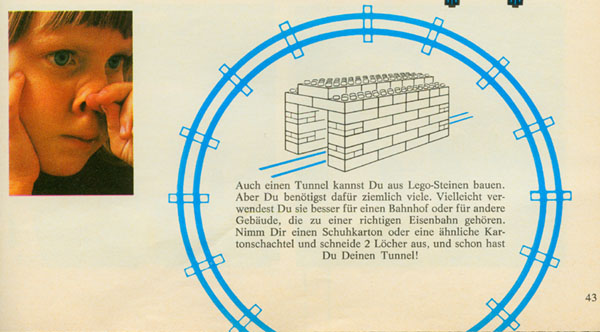m |
m |
||
| Line 29: | Line 29: | ||
</blockquote> | </blockquote> | ||
Yes, this catalog for a commercial product just told you '''''not''''' to buy more of its product, it told you how to conserve, improvise, and work around a problem with a ''shoe box''. Those were the good old days. | Yes, this catalog for a commercial product just told you '''''not''''' to buy more of its product, it told you how to conserve, improvise, Do It Yourself, and work around a problem with a ''shoe box''. Those were the good old days. | ||
Latest revision as of 04:12, 29 January 2008
So, I've been sitting on this beauty for a few months, ever since my friend Mathis showed it to me. I figured, hey, it's 36 years old, what's a few more months before it hits the web? Of course, today the net is ablaze with tributes to Lego, it being their 50th anniversary. Oops. Oh well, I'm always late to birthday parties anyway.
Herewith, I present to you, irrefutable proof that The Good Old Days actually were.

|
Wir spielen mit Lego, 1971 (click image to enlarge)
|
This is the 1971-72 Lego catalog from Germany[1]. It's filled with Lego-y goodness, kids making crazy stuff, step-by-step drawings for various buildings and vehicles—basically what you'd expect. Then, right there on page 43, is this:
Here is the transcription of the German:
Auch einen Tunnel kannst Du aus Lego-Steinen bauen. Aber Du benötigst dafür ziemlich viele. Vielleicht verwendest Du sie besser für einen Bahnhof oder für andere Gebäude, die zu einer richtigen Eisenbahn gehören. Nimm Dir einen Schuhkarton oder eine ähnliche Kartonschachtel und schneide 2 Löcher aus, und schon hast Du Deinen Tunnel!
This translates roughly to:
You can also build a tunnel from Lego bricks. But you'll need quite a few of them. Maybe you better use them for a train station or other buildings that are part of a real railroad. Take a shoe box or a similar card board box and cut out two holes, and there you've got your tunnel already!
Yes, this catalog for a commercial product just told you not to buy more of its product, it told you how to conserve, improvise, Do It Yourself, and work around a problem with a shoe box. Those were the good old days.
- ↑ Actually, I think this is the Swiss German version, since Mathis is Swiss German and my translator friend says in German you'd use Pappschachtel instead of Kartonschachtel.




